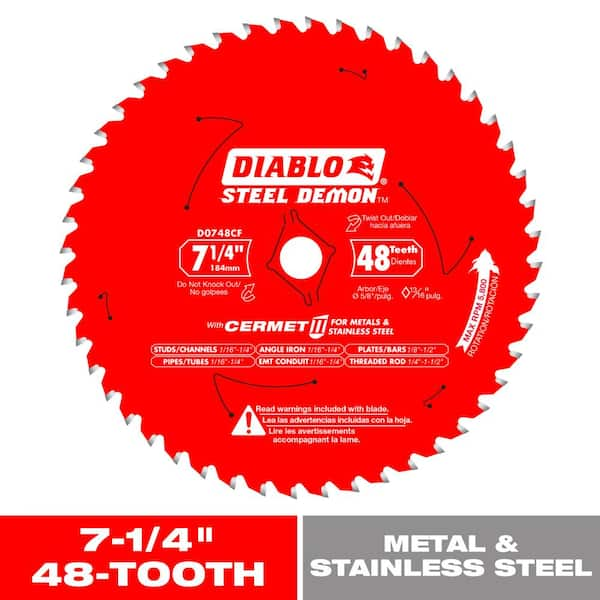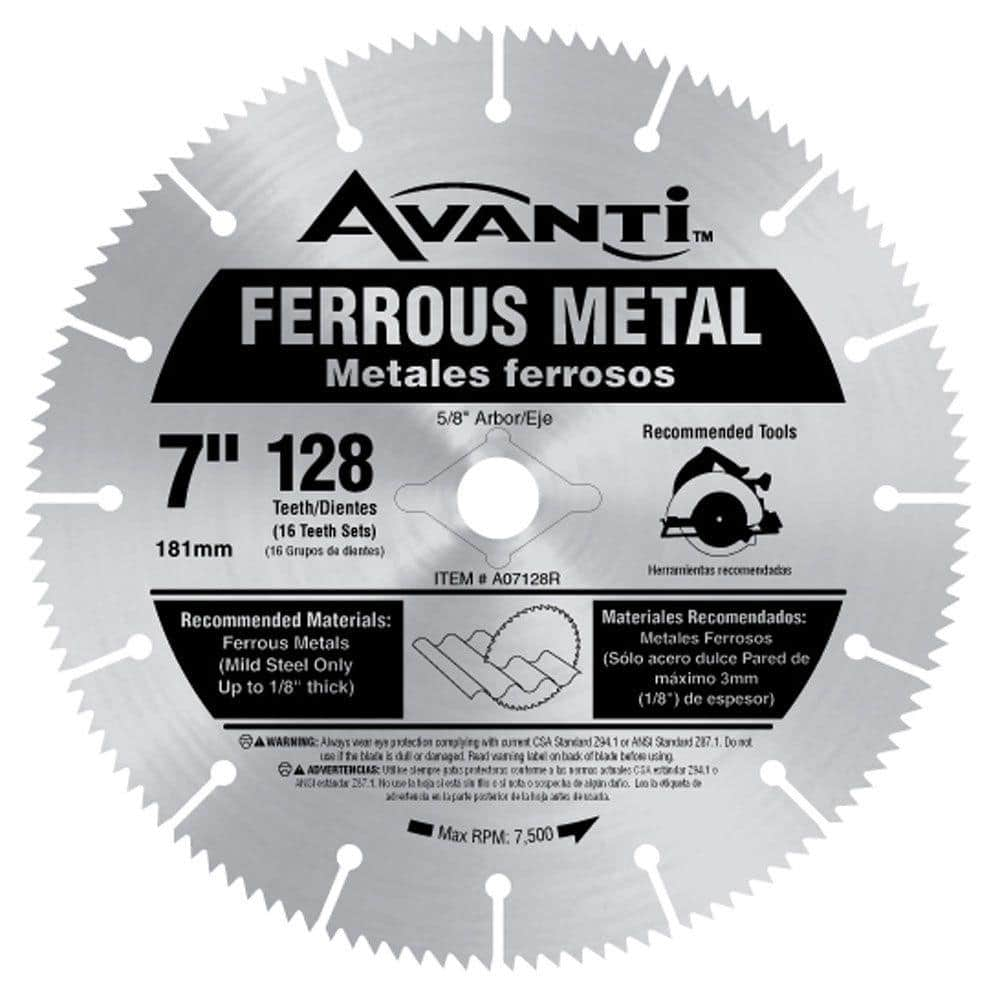So you want to know what steel is used for circular saw blades? Well, let me break it down for you in a way that’s easy to understand. You see, circular saw blades are made from a specific type of steel that’s designed to handle the tough job of cutting through various materials, like wood, metal, or even concrete.
Now, you might wonder what makes this steel so special. The key lies in its composition and heat treatment process. Circular saw blades are typically made from high-speed steel (HSS) or carbide-tipped steel. HSS is a type of steel that contains additional elements like tungsten, molybdenum, or vanadium, which enhance its hardness and heat resistance.
Carbide-tipped steel, on the other hand, has small inserts made of carbide along the blade’s edges. These carbide inserts are incredibly durable and can withstand the high temperatures generated during cutting. They provide excellent cutting performance and can last much longer than traditional HSS blades.
So, whether you’re a DIY enthusiast or a professional carpenter, understanding the type of steel used in circular saw blades can make a big difference in the quality of your cuts. Keep reading to discover more about the specific properties of these steel types and how they affect the performance of circular saw blades. Let’s dive in!

What Steel is Used for Circular Saw Blades?
When it comes to circular saw blades, one important factor that determines their performance and durability is the type of steel used. Different types of steel have distinct properties that make them suitable for specific cutting applications. In this article, we will explore the different types of steel commonly used for circular saw blades, their properties, and the benefits they offer. Whether you’re a professional woodworker or a DIY enthusiast, understanding the steel used in circular saw blades can help you make an informed decision when choosing the right blade for your needs.
The Steel Options for Circular Saw Blades
1. High-Speed Steel (HSS)
High-speed steel (HSS) is a popular choice for circular saw blades due to its excellent combination of hardness, toughness, and heat resistance. HSS blades are made from an alloy of steel with added elements such as tungsten, molybdenum, and cobalt. These additions enhance the blade’s ability to withstand high temperatures generated by cutting and extend its lifespan. HSS blades are suitable for cutting non-ferrous metals, plastics, and wood.
2. Carbide-Tipped Steel
Carbide-tipped circular saw blades are known for their exceptional cutting performance and longevity. These blades feature carbide teeth welded onto a high-quality steel body. Carbide is an extremely hard material made from a combination of tungsten carbide particles and a metal binder. It provides superior cutting ability, especially when it comes to cutting abrasive materials like hardwood, laminates, and composites.
3. Diamond-Tipped Steel
For specialized cutting applications, such as cutting through hard materials like concrete, masonry, and stone, diamond-tipped circular saw blades are the go-to choice. These blades have diamond grit embedded onto the cutting edge, providing exceptional cutting power and durability. Diamond-tipped blades are commonly used in construction and masonry work, where high precision and longevity are crucial.
The Benefits of Each Steel Option
High-Speed Steel (HSS) blades offer several advantages, including:
- Good heat resistance, allowing for continuous cutting without overheating
- Resistance to wear and tear, resulting in less frequent blade changes
- Affordability compared to carbide-tipped and diamond-tipped blades
Carbide-tipped blades provide the following benefits:
- Exceptional cutting performance in tough materials
- Prolonged blade life and reduced maintenance
- The ability to make clean and precise cuts
Diamond-tipped blades offer the following advantages:
- Unrivaled cutting power and speed in hard materials
- Longevity and resistance to wear, allowing for extended use
- The ability to produce clean and chip-free cuts
Tips for Choosing the Right Steel for Your Circular Saw Blades
When selecting a circular saw blade, consider the following factors:
- Type of material to be cut: Different materials require different blade types and steel options. Consider the specific cutting application before making a choice.
- Cutting speed: If you frequently work on tough materials that require high cutting speeds, carbide-tipped or diamond-tipped blades may be more suitable due to their exceptional cutting performance.
- Budget: While carbide-tipped and diamond-tipped blades offer superior performance, they can be more expensive. Factor in your budget when making a decision.
Conclusion
Choosing the right steel for your circular saw blades is crucial for achieving optimal cutting performance and durability. High-speed steel (HSS), carbide-tipped steel, and diamond-tipped steel are the primary options available, each with its own set of benefits and applications. Consider the material to be cut, cutting speed requirements, and budget when selecting the most suitable blade for your needs. By understanding the different steel options available, you can make an informed decision and ensure efficient and precise cuts in your woodworking or construction projects.
Key Takeaways: What Steel is Used for Circular Saw Blades?
- Circular saw blades are typically made from high-speed steel (HSS) or carbide-tipped steel.
- High-speed steel (HSS) blades are more affordable and suitable for general cutting tasks.
- Carbide-tipped steel blades are more durable and designed for cutting harder materials like hardwood and metal.
- The steel used in circular saw blades is carefully selected for its strength, hardness, and resistance to heat and wear.
- Proper care and maintenance of circular saw blades can extend their lifespan and optimize performance.
Frequently Asked Questions
Curious about the steel used for circular saw blades? Look no further! Below are some common questions and answers about the topic.
1. What kind of steel is typically used for circular saw blades?
Circular saw blades are often made from high-speed steel (HSS) or carbide-tipped steel. HSS blades are a popular choice due to their durability and ability to cut through various materials, including wood, plastic, and metal. Carbide-tipped steel blades, on the other hand, feature a hardened carbide tip for even greater cutting power and longer lifespan. These blades are highly effective for cutting hard materials like concrete and steel.
Overall, both HSS and carbide-tipped steel provide excellent cutting performance, but the choice depends on the specific application and the material being cut. It’s important to select the right type of steel for the job to ensure optimal results and longevity.
2. What makes high-speed steel (HSS) an ideal choice for circular saw blades?
HSS is a type of steel specifically designed for high-temperature operations. It can withstand the heat generated during cutting, making it an ideal choice for circular saw blades. HSS blades are known for their excellent hardness, wear resistance, and toughness, allowing them to maintain their cutting edge even under demanding conditions.
Additionally, high-speed steel blades can be easily sharpened, extending their lifespan and cost-effectiveness. The combination of these qualities makes HSS an excellent choice for circular saw blades used in a wide range of cutting applications.
3. What are the advantages and disadvantages of carbide-tipped steel circular saw blades?
Carbide-tipped steel circular saw blades offer several advantages over other types of blades. The carbide tip provides exceptional cutting performance, allowing for faster and more precise cuts. These blades are also highly durable and can withstand the rigors of cutting through hard materials like concrete, metal, and abrasive woods.
However, carbide-tipped steel blades are generally more expensive compared to other options. The high hardness of the carbide tip also makes the blade more susceptible to chipping or breakage if used improperly or on unsuitable materials. It’s essential to use these blades with caution and follow the manufacturer’s recommendations for optimal safety and performance.
4. Can circular saw blades made from high-speed steel (HSS) cut through metal?
Yes, circular saw blades made from high-speed steel (HSS) are capable of cutting through metal. HSS blades are designed to withstand the high heat generated when cutting metal, allowing them to effectively slice through various types of metals, including steel, aluminum, and copper. However, it’s important to choose the appropriate HSS blade with the correct tooth configuration for the specific metal being cut.
Keep in mind that while HSS blades are capable of cutting metal, they may not be as efficient as carbide-tipped blades. For heavy-duty metal cutting applications, carbide-tipped blades are often recommended for their superior cutting performance and extended lifespan.
5. How can I prolong the lifespan of circular saw blades?
To prolong the lifespan of circular saw blades, there are several steps you can take. First, ensure that you are using the correct blade for the specific material you are cutting. Using the wrong blade can cause excessive wear and reduce the blade’s cutting efficiency.
Additionally, always follow the manufacturer’s recommendations for speed, feed rate, and cutting depth. Improper cutting parameters can put unnecessary strain on the blade, leading to premature wear or damage. Regularly inspect the blade for any signs of wear, such as dullness or missing teeth, and replace it as needed. Proper storage, cleaning, and maintenance are also crucial in extending the lifespan of your circular saw blades.

Summary
So, to wrap things up, circular saw blades are made from different types of steel. The most commonly used steel is called high-speed steel (HSS) because it can withstand the high heat generated during cutting. Another type of steel used is carbide-tipped steel, which is known for its durability and ability to cut through tough materials like metal and concrete. Both types of steel have their advantages and are chosen depending on the specific cutting needs. Now you know why the right type of steel is crucial for circular saw blades!
In conclusion, understanding the different steels used for circular saw blades is important. High-speed steel (HSS) and carbide-tipped steel are the main types used. HSS can handle high heat, while carbide-tipped steel is durable for tough materials. Choosing the right steel is key for effective cutting.
